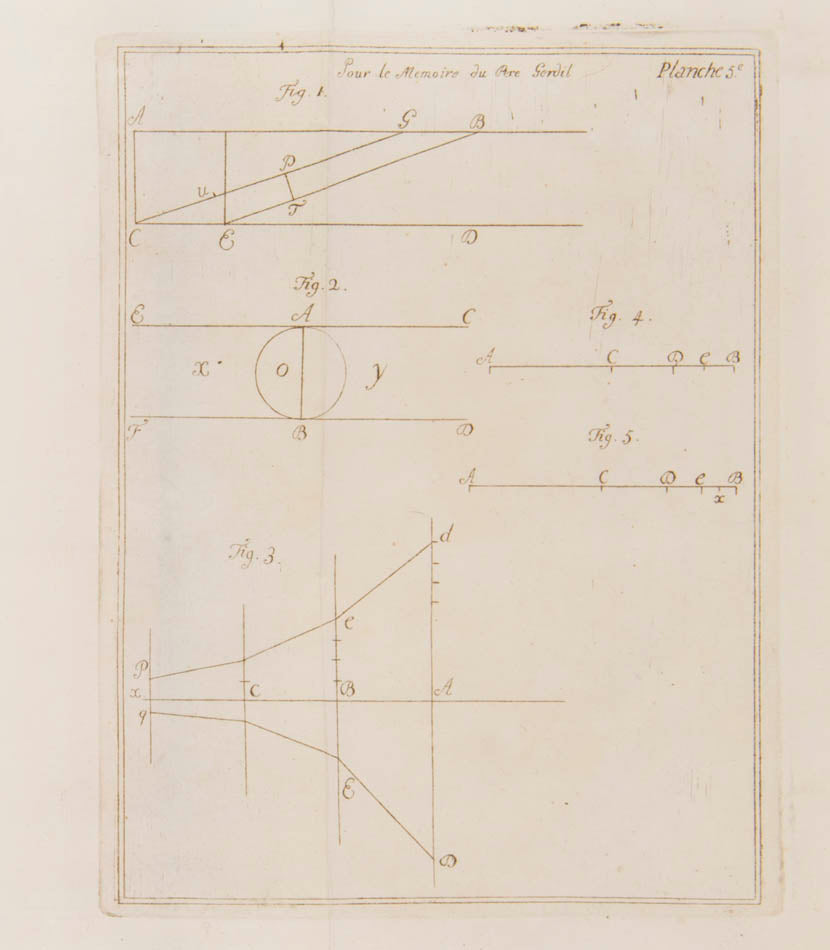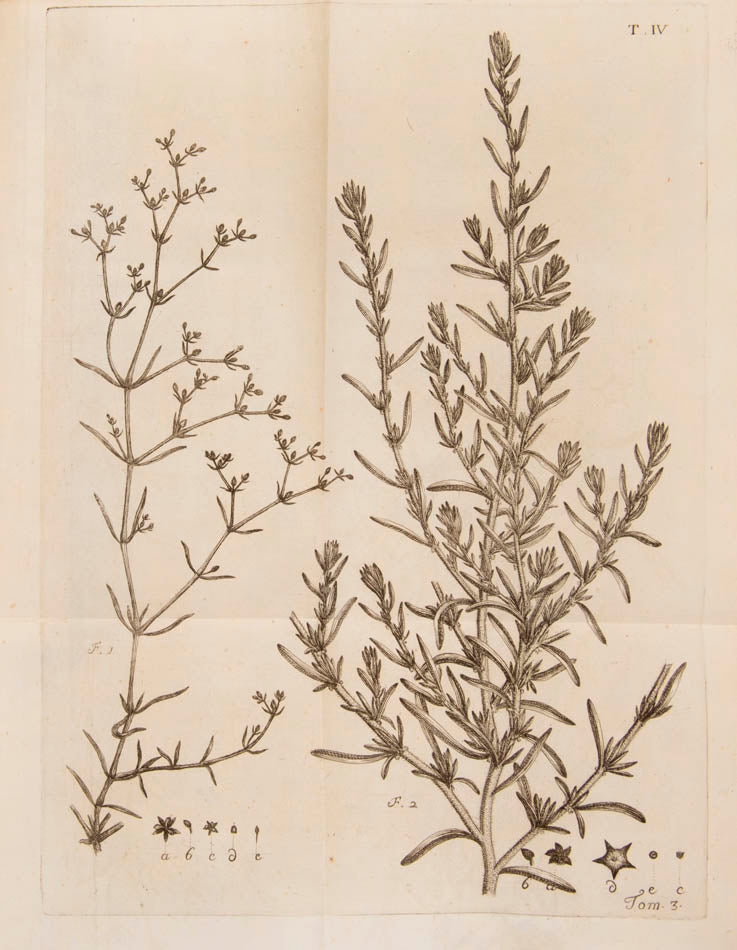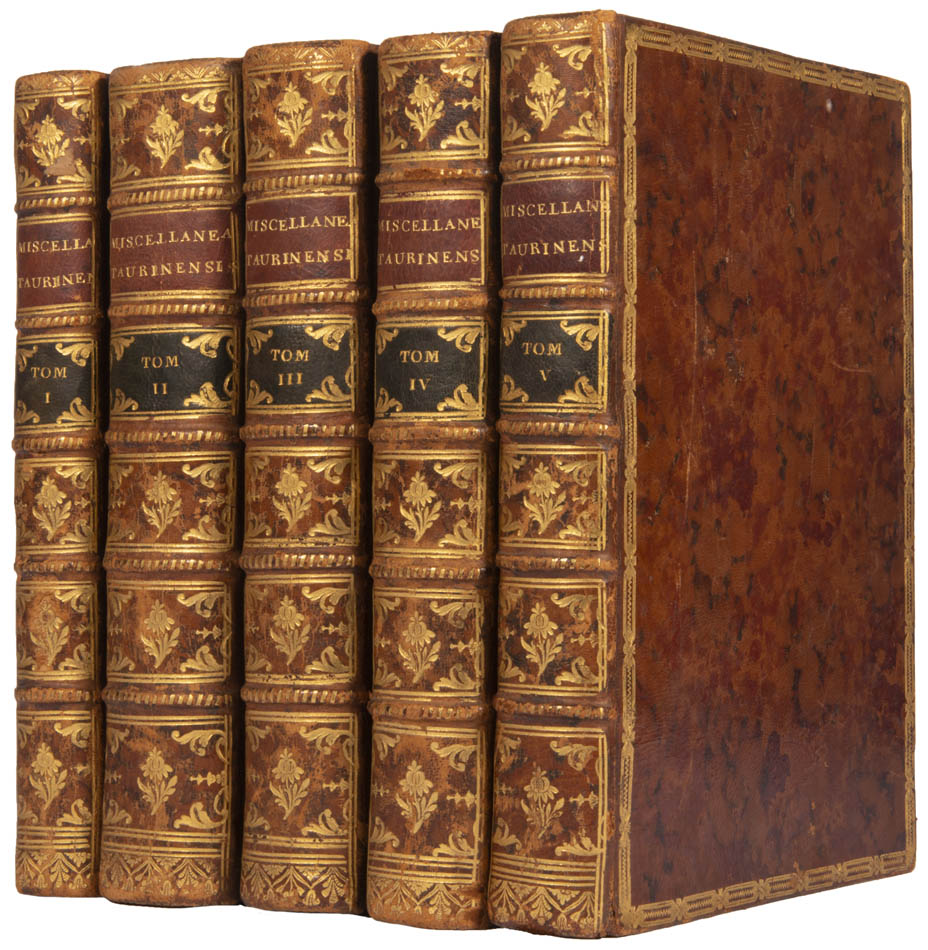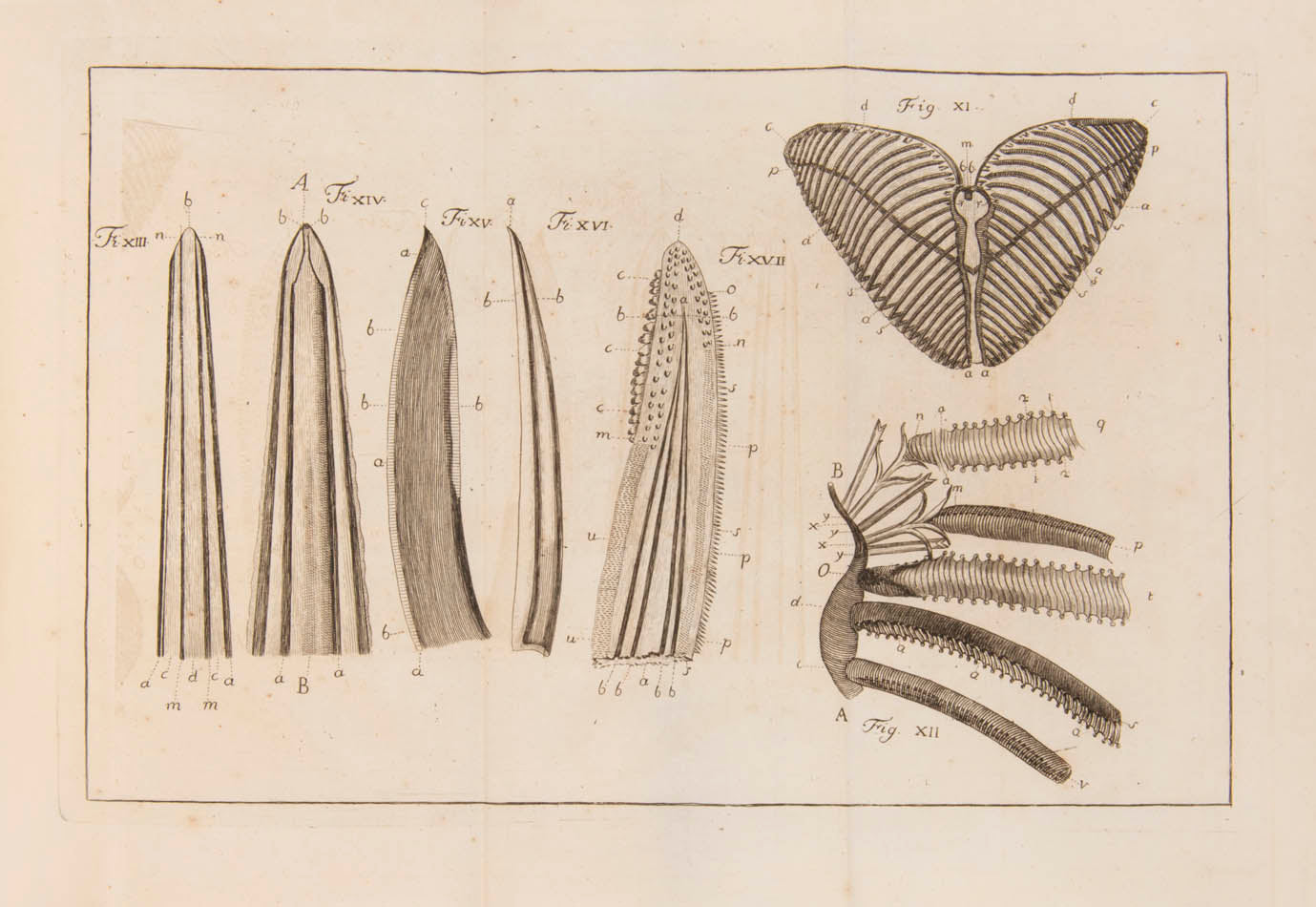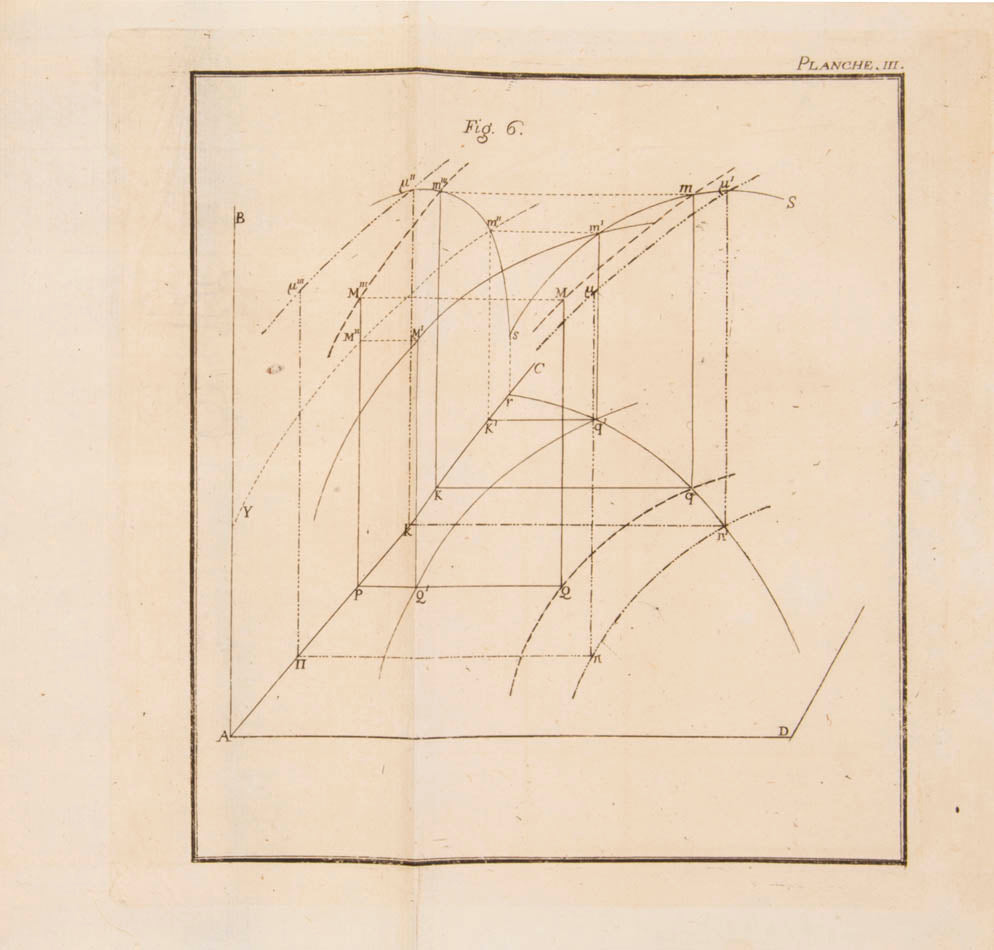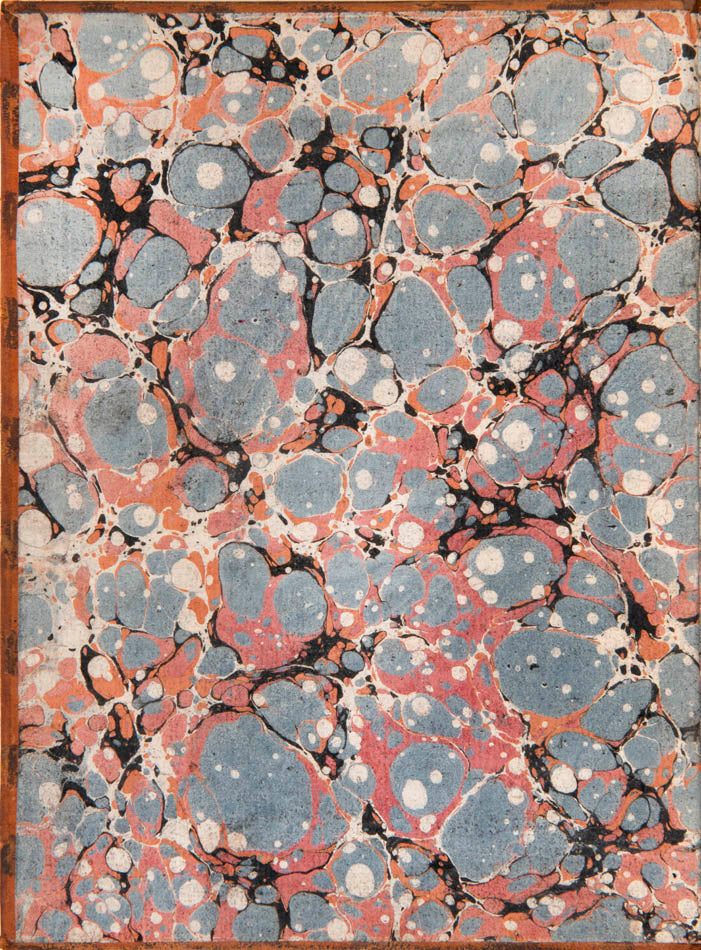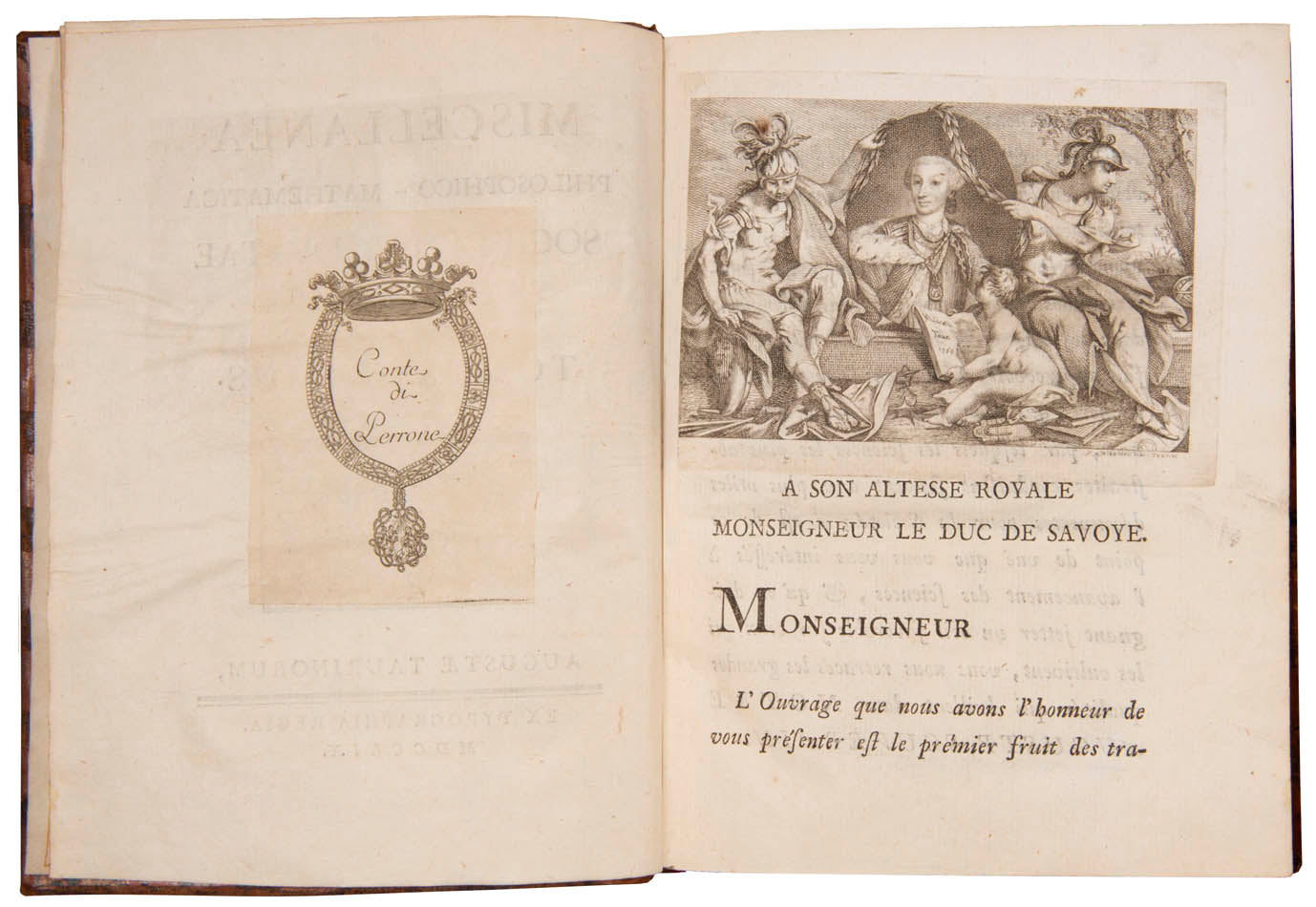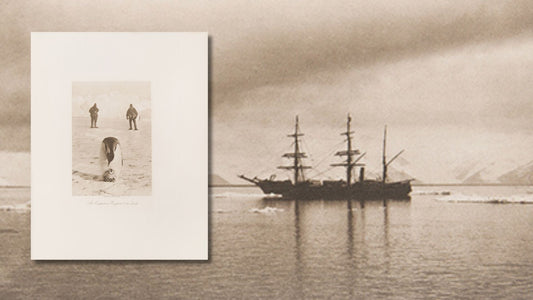LAGRANGE, Joseph-Louis [et al].
Miscellanea Philosophico-Mathematica Societatis Privatae Taurinensis.
Miscellanea Philosophico-Mathematica Societatis Privatae Taurinensis.
[Followed by:] Mélanges de Philosophie et de Mathématique de la Société Royale de Turin.
Stock Code 106947
Turin, Tipografia Regia, 1759-1773.
'The Turin Mathematical Society was founded in 1757 by a group of young scientists who were living in Turin, including Lagrange, Guiseppe Angelo Saluzzodi Menusiglio (Count Saluzzo) and the medical physician Giovanni Cigna. As with many such societies, one of the main reasons to found the society was to provide support and infrastructure for publishing a journal. In this case they produced Miscellanea Taurinensio ou Mélanges de Turin which contained papers written in both French and Latin. The first volume appeared at the beginning of the summer of 1759 and contained a paper by Lagrange on maxima and minima. The second volume was published in the summer of 1762 and again included important contributions from Lagrange such as a work on the calculus of variations and another paper on the propagation of sound. The third volume of the Mélanges de Turin, containing a paper by Lagrange on the integral calculus, appeared in 1766. By the time the fourth volume was published in the summer of 1773 Lagrange had left Turin but it contained four memoirs which he had sent from Berlin... The same volume contains 'Recherches sur le calcul intégral aux différences infiniment petites, et aux différences finies' by Laplace, showing that the journal had already gained a high reputation. In 1783 the Society expanded to become the Academy of Sciences of the Kingdom of Sardinia, and it remains one of the major Academies in Italy. Plana, who worked in Turin, was a major contributor to the Academy in the first half of the nineteenth century presenting his studies on lunar motion. The academy elected foreign members and Babbage, who visited Turin in 1840, was elected in 1841. Ohm was also elected as a corresponding member around this time' (University of St. Andrews School of Mathematics and Statistics).
Conte Carlo Baldassare Perrone di San Martino was the Sardinian resident minister in Great Britain between 1749 and 1755. In 1777 he was appointed Regent of the Secretariat for Foreign Affairs and in 1779 he became First Secretary. In the same year, he was appointed to the Order of the Annunziata, the pinnacle of the honours system in the Kingdom of Italy. His bookplate, present here in all five volumes, shows the collar badge of the Order depicting Our Lady of the Annunciation.
First editions; 5 vols, 4to, (23 x 17 cm); half-titles, engraved and woodcut vignettes to titles, large engraved headpiece at beginning of text, woodcut headpieces, tailpieces and initials, numerous engraved plates bound at the end of each volume, mathematical equations throughout, scattered light foxing, few small marginal repairs to final leaves of final volume, without loss; contemporary marbled calf, spine richly gilt in compartments, speckled edges, marbled endpapers, corners slightly rubbed.
Couldn't load pickup availability
Provenance
Provenance
Delivery
Delivery
We offer secure and express delivery on all local and international orders of rare books, maps and prints placed through this website.
About us
About us
Shapero Rare Books is an internationally renowned dealer in antiquarian & rare books and works on paper.
Our Bookshop and Gallery can be found in the heart of Mayfair at 94 New Bond Street, where most of our stock is available to view and on public display.
We exhibit at major international art fairs, including TEFAF (Maastricht and New York), Frieze Masters, Art Miami and Masterpiece London, as well as antiquarian & rare book fairs including New York, Paris, London, Los Angeles, San Francisco and Hong Kong.
Ask us a question
Ask us a question

